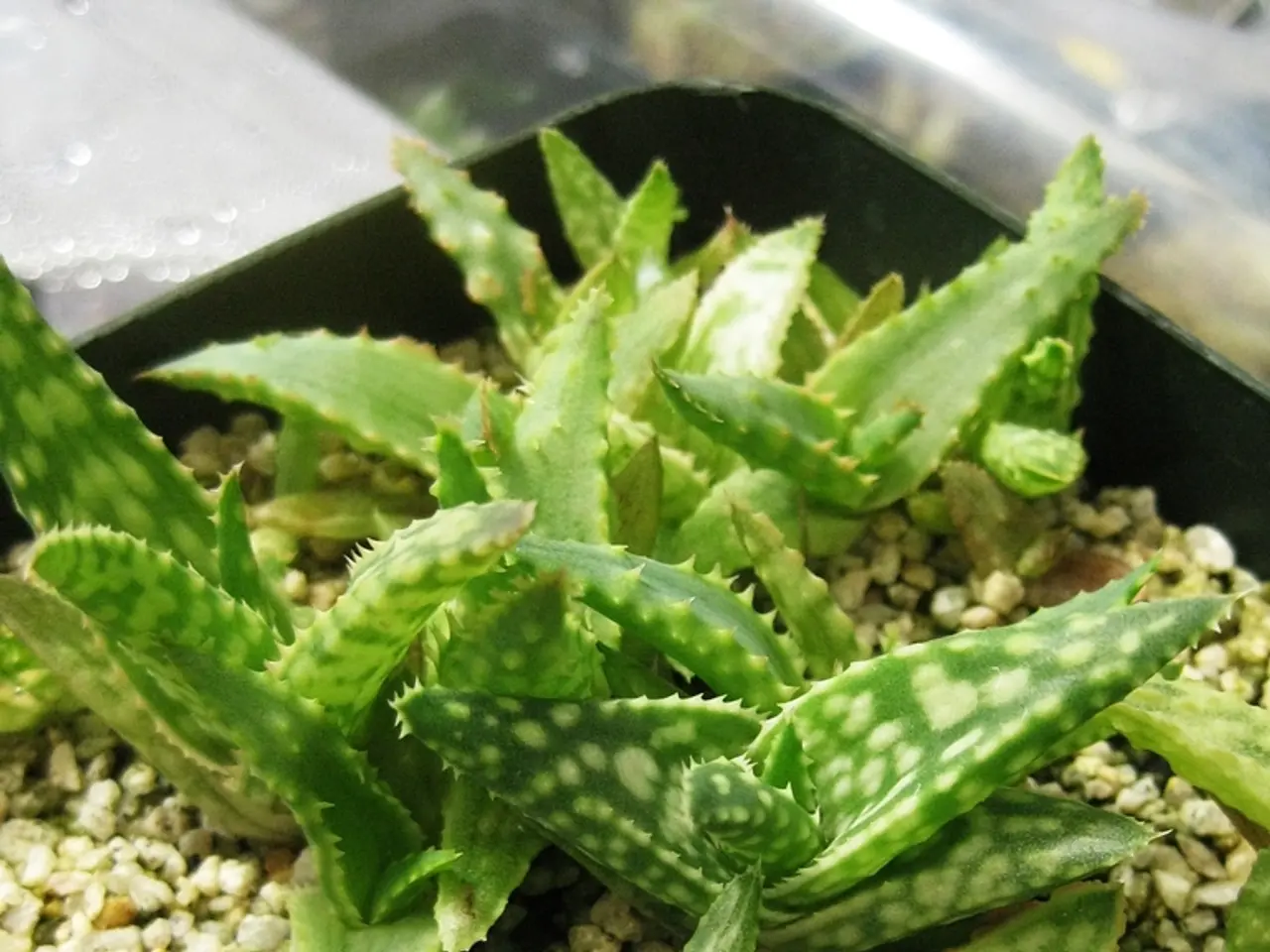Mars May Hold a New Mineral Discovery, Suggesting the Planet Remained Warm for Extended Periods
A groundbreaking study led by Janice Bishop and her team from the SETI Institute and NASA Ames Research Center has uncovered evidence of geochemically active areas on Mars that may have persisted for billions of years, even after the planet dried out.
The researchers made this remarkable discovery by identifying a new type of mineral, ferric hydroxysulfate, on Mars. This mineral forms when certain iron-rich salts are warmed and exposed to oxygen.
The team found the suspect layers of this mineral at two sulfate-bearing sites: Aram Chaos and the plateau above Juventae Chasma. At Aram Chaos, the altered layers sit low in the stack, tucked beneath other sulfates, suggesting warmth rose from below, like a buried hot spot. On the Juventae Plateau, the sulfate layers are sandwiched between two volcanic rock units, pointing to heat from above - lava or ash that briefly capped the area.
The reaction that forms the ferric hydroxysulfate mineral changes the mineral's structure just enough to give it a distinct infrared "voice". This unique characteristic could make it a marker for places where Mars stayed geochemically active after it dried.
Back on Earth, the researchers warmed common Martian sulfates and added heat and oxygen to transform the powders into material that mirrors the Martian signal. The lab work supports the team's findings and suggests that if the team is correct, there may be more of these warm-altered layers in and around Valles Marineris.
The likely heat sources for the mineral alterations are brief volcanic episodes or longer, low-grade geothermal warmth. The team argues that the alterations probably happened during the Amazonian period, within the last three billion years.
The discovery of the mineral could be a smart target for future missions hunting past habitability on Mars. If the team's findings are confirmed, the new mineral, if officially recognized, could be named due to its unique crystal structure and thermal stability.
The study was published in the journal Nature Communications and stumps planetary scientists for years, as the signal found in data from a NASA orbiter appears to be a match for the new type of ferric hydroxysulfate mineral. Scientists must find the mineral on Earth to officially recognize it as a new mineral.
In conclusion, this fascinating study suggests that Mars may have had hidden warm zones even after it dried out, potentially offering a new perspective on the planet's geological history and the possibility of past life.
Read also:
- Nightly sweat episodes linked to GERD: Crucial insights explained
- Antitussives: List of Examples, Functions, Adverse Reactions, and Additional Details
- Asthma Diagnosis: Exploring FeNO Tests and Related Treatments
- Unfortunate Financial Disarray for a Family from California After an Expensive Emergency Room Visit with Their Burned Infant








